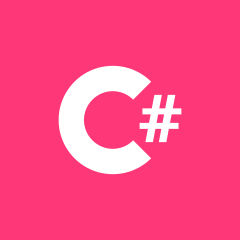使用 LinqToTwitter 与 Twitter direct_messages/events
我真的被困在这好几天了。我在 ASP.Net C# 中使用 LinqToTwitter
我正在尝试让新的 DirectMessages 工作,我遵循了示例但没有运气。
我希望该功能适用于按钮单击,所以我尝试的是:
Btn点击:
`
protected void Btn1_Click(object sender, EventArgs e)
{
string x = MyTest().Result;
}
`
我的测试:
`
static async Task<string> mytest()
{
AspNetAuthorizer auth = DoAuthorization();
var twitterCtx = new TwitterContext(auth);
List<DMEvent> AllDmEvents = new List<DMEvent>();
string Cursor;
DirectMessageEvents dmResponse =
await
(from dm in twitterCtx.DirectMessageEvents
where dm.Type == DirectMessageEventsType.List &&
dm.Count == 10
select dm)
.SingleOrDefaultAsync(); //In debugging mode, after this line is executed, it will go away and keep loading forever and never come back
AllDmEvents.AddRange(dmResponse.Value.DMEvents);
Cursor = dmResponse.Value.NextCursor;
string xxx = (JsonConvert.SerializeObject(AllDmEvents, Formatting.None));
return xxx;
}
`
做授权:
`
static AspNetAuthorizer DoAuthorization()
{
AspNetAuthorizer auth = new AspNetAuthorizer();
auth = new AspNetAuthorizer
{
CredentialStore = new SessionStateCredentialStore
{
ConsumerKey = "MyConsumerKey",
ConsumerSecret = "MyConsumerSecret ",
OAuthToken = "MyOAuthToken ",
OAuthTokenSecret = "MyOAuthTokenSecret ",
ScreenName = "MyUserName",
UserID = 12345678
}
};
return auth;
}`
任何帮助将SO非常感谢!
 慕盖茨4494581
慕盖茨44945811回答
-

手掌心
该DoAuthorization()在你的代码看起来它从控制台样本来了,不会与ASP.NET工作。原因是 ASP.NET 是无状态的,并且 OAuth 过程将您带到 Twitter 站点并返回。因此,您必须将授权分成两部分:开始和完成。我猜您使用的是 ASP.NET MVC,但如果您使用的是 WebForms,则概念相似(但不同)。这是开始部分:public class OAuthController : AsyncController{ public ActionResult Index() { return View(); } public async Task<ActionResult> BeginAsync() { var auth = new MvcAuthorizer { CredentialStore = new SessionStateCredentialStore { ConsumerKey = ConfigurationManager.AppSettings["consumerKey"], ConsumerSecret = ConfigurationManager.AppSettings["consumerSecret"] } };请注意,它使用一个MvcAuthorizer,填充凭据。获得MvcAuthorizer实例后,将用户重定向到 Twitter 进行授权,如下所示: string twitterCallbackUrl = Request.Url.ToString().Replace("Begin", "Complete"); return await auth.BeginAuthorizationAsync(new Uri(twitterCallbackUrl)); }将用户发送到 Twitter 授权页面,在那里他们授予您的应用程序代表他们操作的权限。Twitter将用户重定向回twitterCallback,这也是为什么上述修改URL中的代码替换Begin与Complete您的网址。因此,Twitter 将用户重定向回您的应用程序,该应用程序调用以下CompleteAsync()操作: public async Task<ActionResult> CompleteAsync() { var auth = new MvcAuthorizer { CredentialStore = new SessionStateCredentialStore() }; await auth.CompleteAuthorizeAsync(Request.Url); // This is how you access credentials after authorization. // The oauthToken and oauthTokenSecret do not expire. // You can use the userID to associate the credentials with the user. // You can save credentials any way you want - database, // isolated storage, etc. - it's up to you. // You can retrieve and load all 4 credentials on subsequent // queries to avoid the need to re-authorize. // When you've loaded all 4 credentials, LINQ to Twitter will let // you make queries without re-authorizing. // //var credentials = auth.CredentialStore; //string oauthToken = credentials.OAuthToken; //string oauthTokenSecret = credentials.OAuthTokenSecret; //string screenName = credentials.ScreenName; //ulong userID = credentials.UserID; // return RedirectToAction("Index", "Home"); }既然您的应用程序拥有用户的权限,请获取他们的令牌并保留它们以供后续查询使用,这样您就不必每次用户想要使用您的应用程序时都继续 OAuth 过程。请参阅代码中有关如何获取这些凭据的说明。现在,当您要执行查询时,实例化一个MvcAuthorizer,如下所示:static async Task<string> mytest(){ var auth = new MvcAuthorizer { CredentialStore = new SessionStateCredentialStore() }; var twitterCtx = new TwitterContext(auth); List<DMEvent> AllDmEvents = new List<DMEvent>(); string Cursor; DirectMessageEvents dmResponse = await (from dm in twitterCtx.DirectMessageEvents where dm.Type == DirectMessageEventsType.List && dm.Count == 10 select dm) .SingleOrDefaultAsync(); //In debugging mode, after this line is executed, it will go away and keep loading forever and never come back AllDmEvents.AddRange(dmResponse.Value.DMEvents); Cursor = dmResponse.Value.NextCursor; string xxx = (JsonConvert.SerializeObject(AllDmEvents, Formatting.None)); return xxx;}你可以看到你修改的第一个语句如何myTest()方法实例MvcAuthorizer有SessionStateCredentialStore,牵着你的凭据。最后,在您希望用户使用 Twitter 授权您的应用程序的时间点(登录、第一次查询或您选择的任何其他时间),检查他们是否已经获得授权,如果没有,请重新定向, 像这样: public ActionResult Index() { if (!new SessionStateCredentialStore().HasAllCredentials()) return RedirectToAction("Index", "OAuth"); return View(); }注意上面的代码如何调用HasAllCredentials()一个SessionStateCredentialStore实例。我假设您将添加自己的逻辑来确定何时加载用户的凭据,但希望您了解HasAllCredentials()helper 方法,以便更轻松地了解何时必须对用户进行授权。
 随时随地看视频慕课网APP
随时随地看视频慕课网APP
相关分类

 C#
C#